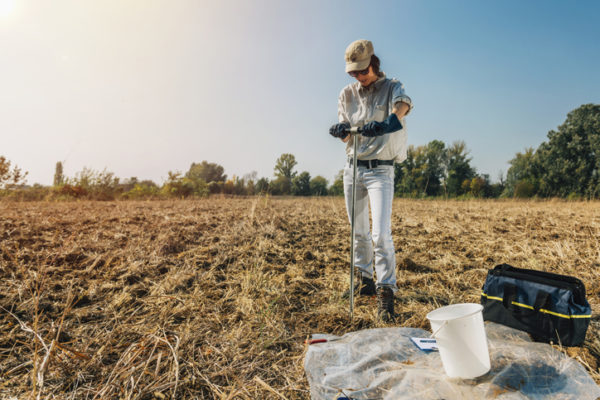For commercial property owners, purchasers, and developers, environmental compliance services are a critical component of due diligence and risk mitigation.
Environmental compliance services can protect from liability associated with land contamination, unexpected costs associated with environmental clean-up, and unfavorable purchases of previously contaminated property.
Environmental compliance services also are critical in preventing unnecessary government fines and other penalties, including potential prison terms for flagrant violations of environmental regulations and willful failures of due diligence.
To ensure you get the most out of your investment in environmental compliance services, here’s what you need to know.
Understanding the Types of Environmental Compliance Services
Environmental compliance services can encompass everything from pre-purchase due diligence on a property, to assessments of existing property and remediation services. There are three key types of environmental compliance services you need to understand:
- Phase I, II, and III Environmental Site Assessments
- Remediation Design
- Remediation Execution and Construction
Phase I, II, and III Environmental Site Assessments
A Phase I Environmental Site Assessment (ESA) is a basic environmental compliance service, and operates as an environmental risk assessment. Performing a Phase I ESA prior to purchase satisfies the requirements to qualify for an innocent landowner, contiguous landowner, or bona fide prospective purchaser limitation of liability, according to the EPA’s Comprehensive Environmental Response, Contamination, and Liability Act. Under this criteria, new property owners are shielded from legal liability in the event that contamination is later found on the property.
A Phase I ESA determines whether there is a “recognized environmental concern” and/or “business environment risk” associated with the property, in accordance with ASTM E-1527. It generally includes a records review, site visit, and interviews to determine likely environmental risk of a property in question. If it yields no cause for concern, generally a purchase may proceed with confidence. When it determines that there may be environmental issues affecting the property, a Phase II ESA is recommended.
The purpose of a Phase II Environmental Site Assessment is to determine factually whether contaminants or other relevant environmental conditions are present. The scope of the assessment will vary based on the results of the Phase I ESA, the loan size, the property’s historical use, and other factors.
The Phase II ESA may include soil and groundwater sampling; comparison of laboratory results to local, state, and federal regulations; inspection of interior spaces for asbestos, mold, radon, or lead-based paint; and identification of wetlands, ecological resources, or endangered species that may prevent certain uses.
When environmental contaminants are discovered by the Phase II ESA, the landowner, purchaser, or lender may proceed to order a full Phase III Environmental Site Assessment, also known as a Contamination Assessment.
The Contamination Assessment is the most comprehensive of the environmental assessments. It is designed to definitively determine both the horizontal and vertical extent of environmental impacts, and to estimate the method and cost of remediation. It may include extensive soil and groundwater sampling, laboratory analysis, remediation recommendations, and a remediation cost estimate.
Remediation Design
Remediation Design is the next step after a Contamination Assessment reveals the nature, degree, and the horizontal and vertical extent of contamination on a site. This environmental compliance service includes:
- An overview of the remediation techniques and technologies to be employed
- Detailed information on each element and stage of the remediation plan
- A detailed cost estimate
It will take into account multiple factors affecting remediation, including:
- The geology of the property
- The lithology of the soil
- The type of contamination
- The extent of contamination
- Best practice remediation technologies and techniques
- Regulatory requirements
A Remediation Design should provide you with everything you need in order to issue a bid request for the remediation project. It should be conducted by an expert team with up-to-date information on the latest technologies and techniques and other industry knowledge.
Remediation Execution and Construction
Remediation Construction refers to the environmental compliance service that engages in cleaning up contamination and bringing the property into environmental compliance. It may be offered as a turnkey service with Remediation Design, or bid separately.
Remediation Construction may include removing underground storage tanks (USTs), remediating contamination in soil and water, constructing facilities and equipment for ongoing remediation of contamination, and any other services required by the Remediation Design.
It’s important that remediation execution and construction be performed by a qualified firm with extensive expertise, experience, and access to the latest technologies, and techniques. Environmental compliance technologies, techniques, and regulations change frequently, and it’s critical that your project be completed in an up to date manner.
How to Choose an Environmental Compliance Services Provider
Environmental compliance is no small matter. In 2018, the Environmental Protection Agency (EPA) collected $5 billion in criminal fines and civil penalties for violations of federal environmental regulations. An additional $1.2 billion was committed by private firms to clean up contaminated sites. In many cases, prison terms were issued for major violations.
- Experience. Environmental compliance services are complex and require an in-depth understanding of the regulatory environment as well as the best technologies and techniques for contamination assessment and remediation. Choose a firm with at least 25 years of experience to ensure they bring what it takes to assure you of environmental compliance.
- Cross-Disciplinary Expertise. Environmental compliance services require a broad range of in-depth knowledge that is not contained within a single discipline. Look for a firm that retains environmental engineers, scientists, geologists, construction professionals, and other related experts on staff to serve you.
- National Footprint. If you’re making a single property purchase, a small local firm may serve your needs. But if you operate nationally, access to a trusted firm that can serve all your properties in an effective manner is cost-effective and sensible.
- Commitment. You want your environmental compliance services company to be on your side, no matter what. Look for a firm with a proven track record of customer satisfaction, that stands behind its work and gives you peace of mind.
We would love to be your environmental compliance services firm of choice. We’ve been in the business since 1989, boast a deep bench of expertise in all relevant fields, have a national footprint, and we’ll absolutely have your back.
Contact one of our environmental compliance experts today to discuss your needs.






